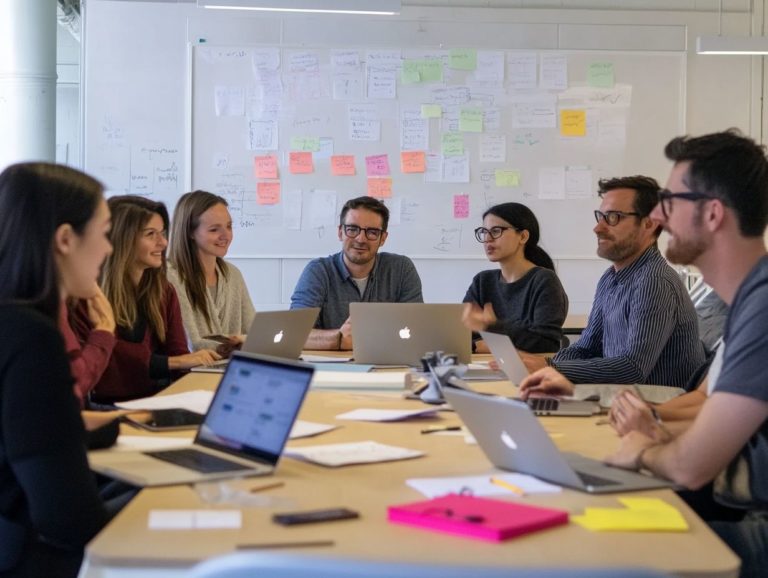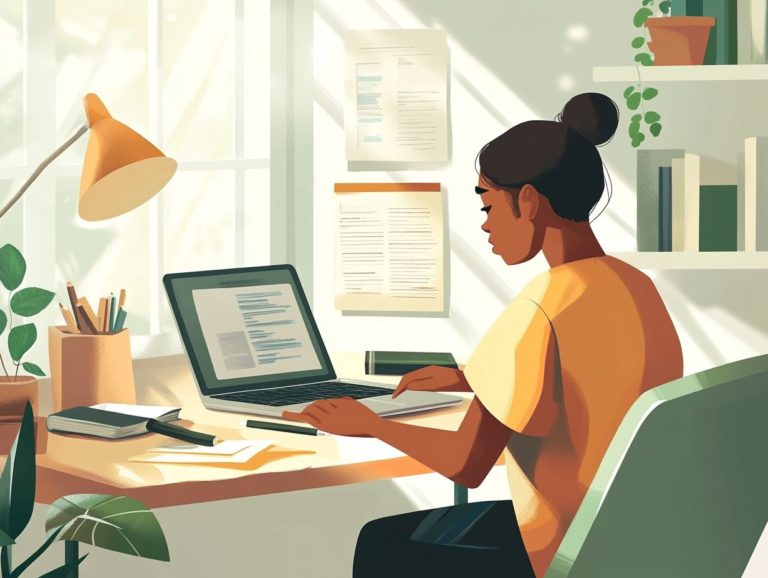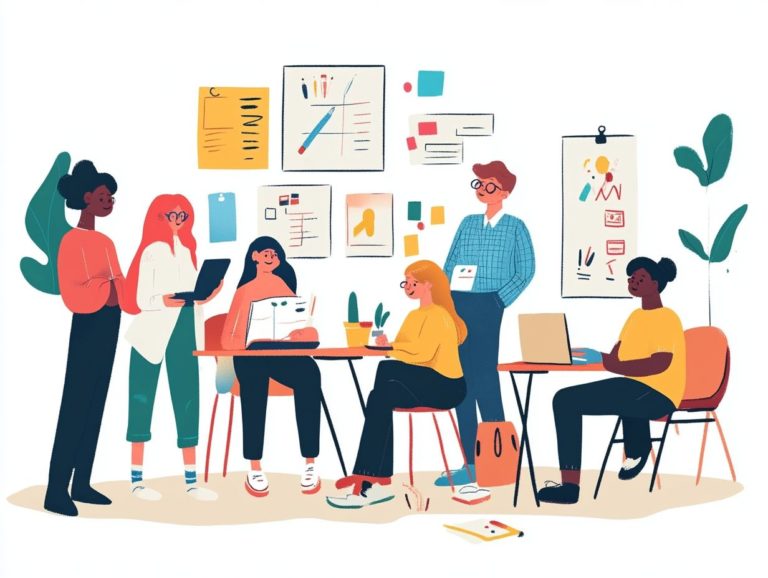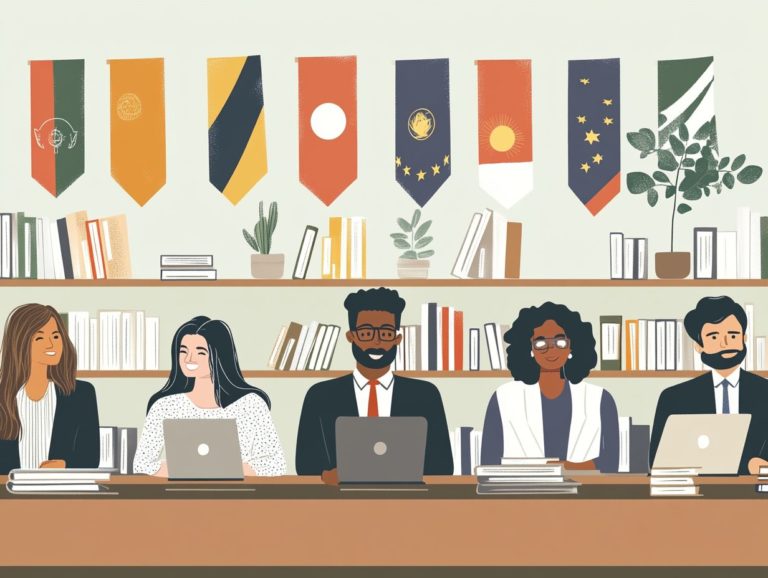The Benefits of Blended Learning for Skill Enhancement
Blended learning makes education exciting! It boosts retention and lets you study at your own speed. This innovative approach enhances engagement by integrating traditional classroom experiences with the flexibility of online resources.
You will explore the definition and essential components of blended learning. You ll also uncover its advantages and discover how it fosters skill development through personalized learning experiences.
Practical tips and real-world examples will equip you to implement blended learning in various settings.
Whether you re an educator, a student, or a professional eager to enhance your skills, this guide is crafted to inspire and inform you.
Contents
- Key Takeaways:
- Understanding Blended Learning
- Advantages of Blended Learning
- How Blended Learning Enhances Skill Development
- Implementing Blended Learning in Different Settings
- Best Practices for Successful Blended Learning
- Frequently Asked Questions
- What is blended learning?
- What are the benefits of blended learning for skill enhancement?
- How does blended learning improve flexibility?
- How does blended learning personalize the learning experience?
- What types of learning resources are available in blended learning?
- Can blended learning help enhance specific skills?
Key Takeaways:
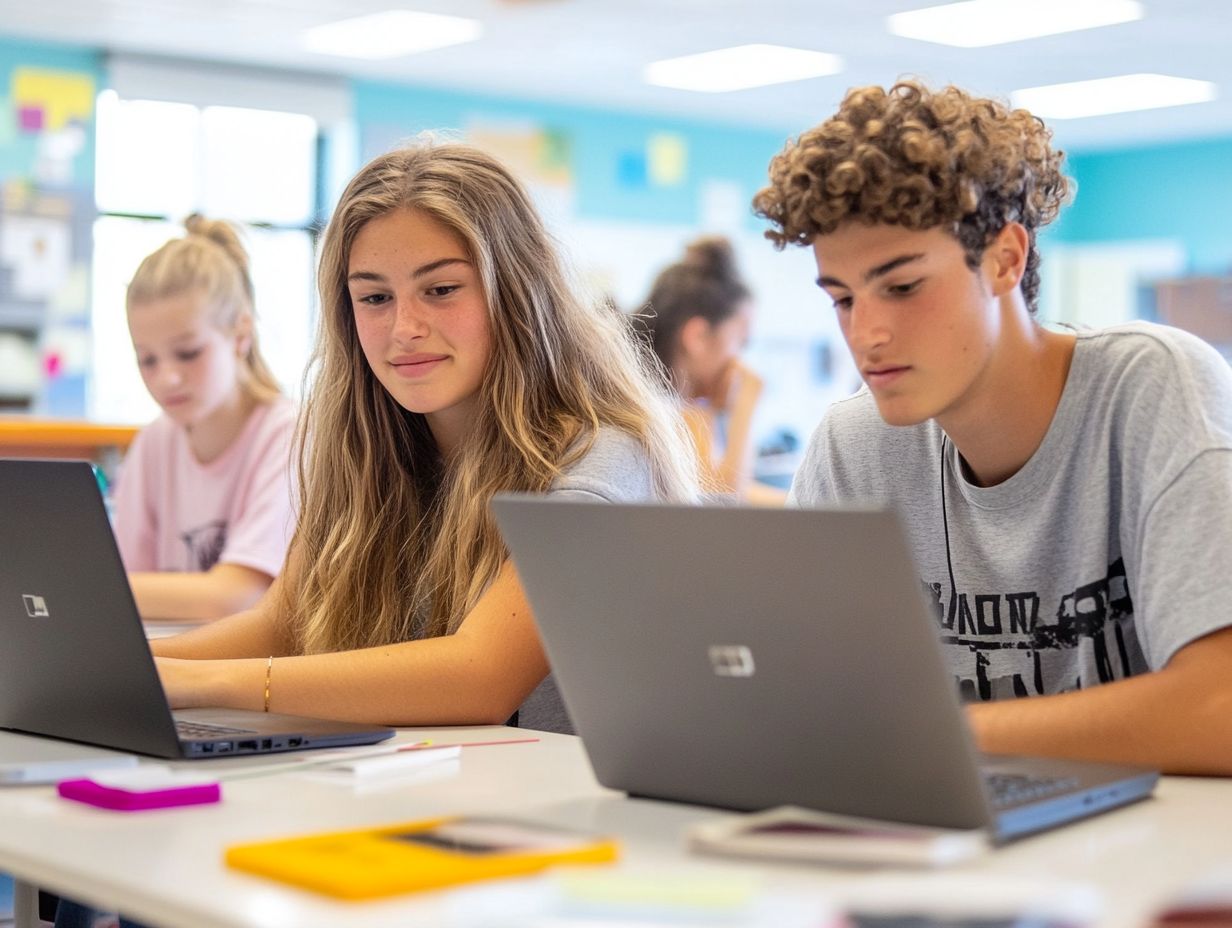
- Blended learning combines online and traditional methods, improving retention and engagement for skill enhancement.
- This flexible approach allows you to access materials anytime, making it perfect for busy individuals.
- Targeted and personalized learning enhances specific skills and provides practical experience.
Understanding Blended Learning
Blended learning represents a transformative educational approach that merges face-to-face instruction with online learning. This creates a dynamic learning experience.
This model uses the strengths of both in-person and digital platforms. It allows for personalized pathways tailored to different ways people learn.
As you aim to increase engagement and academic results, blended learning is a key strategy. It harmonizes innovative teaching methods with effective educational technology.
Definition and Components
Blended learning is an approach that combines online activities and traditional face-to-face instruction, providing you with a flexible and interactive experience.
This model truly brings together the best of both worlds. You benefit from personalized online modules that cater to your pace while enjoying dynamic discussions in the classroom.
Key components include digital resources like videos, interactive quizzes, and forums that promote deeper understanding and peer collaboration.
Imagine a science class where you watch instructional videos at home and then participate in hands-on experiments during class. This method enhances your theoretical knowledge and solidifies your practical skills.
The synergy of online and in-person elements elevates your overall educational journey, making learning engaging and effective.
Advantages of Blended Learning
Blended learning offers numerous advantages that enhance the educational experience for both students and educators. You can expect improved engagement, flexibility, and accessibility, which are crucial for effective skill development.
This approach not only enriches learning but also fosters a more dynamism and inclusive environment.
Improved Retention and Engagement
One major benefit of blended learning is its ability to boost your retention and engagement through various instructional strategies and resources. This method combines traditional classroom experiences with online components, allowing you to access materials when it suits you.
Research shows this combination can lead to a stunning 34% increase in retention rates, as it supports diverse learning styles. Interactive content like quizzes and multimedia presentations keeps you engaged while peer feedback builds a sense of community.
Using multimedia tools deepens your understanding and encourages active participation, creating a more dynamic educational experience.
Start exploring blended learning today and transform your educational journey!
Flexibility and Accessibility
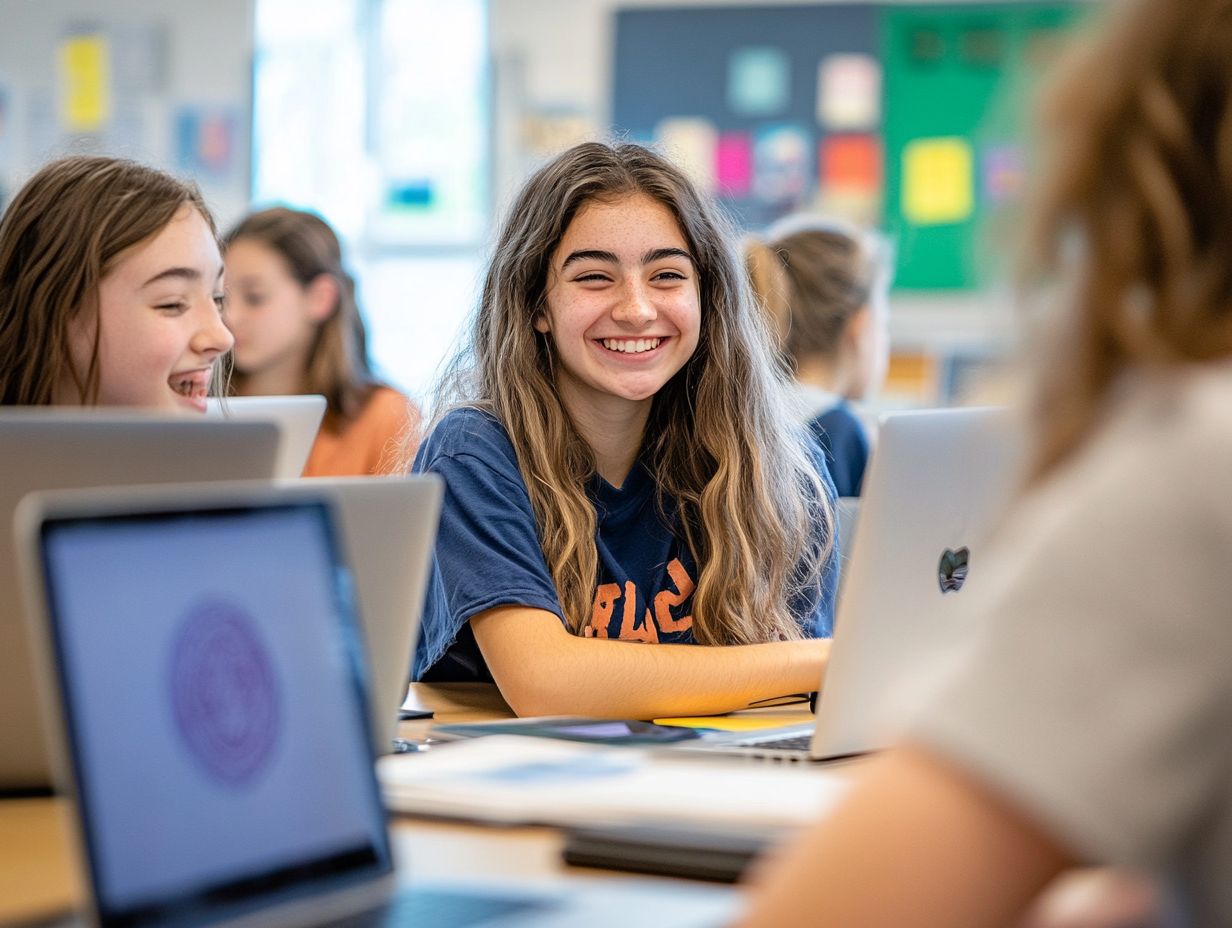
Blended learning offers you great flexibility and accessibility. It gives you the power to engage with course material at your own pace and on your own schedule, no matter where you are.
This exciting approach uses online platforms that really engage you. These platforms often include features like video conferencing, interactive quizzes, and discussion forums, all designed to cater to diverse learning styles. For example, you can access recorded lectures on platforms like Zoom and Microsoft Teams, allowing you to revisit complex concepts whenever you need to grasp them fully!
Adaptive learning technologies like Edmodo and Canvas customize your coursework based on your progress. This ensures that you receive the support necessary for your success. These advancements create an inclusive environment that enables you to flourish according to your unique preferences and requirements.
How Blended Learning Enhances Skill Development
Blended learning is essential for elevating your skill development. It offers tailored, personalized learning experiences that cultivate the skills to think critically and solve problems, perfectly suited for today s digital landscape.
Targeted and Personalized Learning
Targeted and personalized learning stands as a hallmark of blended learning settings. This approach allows you to tailor the curriculum to meet the diverse needs and preferences of your students. It not only fosters greater engagement but also elevates the overall learning experience.
By integrating data from learning management systems, which are software that helps manage courses and track student progress, you gain valuable insights into individual progress and preferences. This enables you to craft a more relevant and effective curriculum. For instance, if a student struggles with a specific math concept, tools can recommend supplementary resources, such as interactive modules or opportunities for peer collaboration.
You can also offer varied assessments like projects or quizzes designed to align with a student s learning style to ensure comprehension and retention. This data-driven strategy gives learners the power to take ownership of their educational journey, ultimately fostering deeper understanding and heightened motivation.
Real-World Application and Practice
Blended learning gives you the power to apply and practice the skills you’ve acquired through engaging, project-based experiences and collaborative activities. This innovative approach seamlessly integrates traditional and digital learning environments, encouraging you to confront real-life challenges and preparing you for future careers.
For instance, when you collaborate on community projects, you re not just putting theoretical knowledge into practice; you re also honing essential skills like teamwork, communication, and problem-solving. These hands-on experiences often spark heightened motivation, as you witness the direct impact of your efforts. Many students find themselves more invested in their studies, understanding that their contributions can lead to tangible results, whether through environmental initiatives or developing business plans.
This method effectively bridges the gap between education and the demands of the real world.
Implementing Blended Learning in Different Settings
Implementing blended learning in a range of educational environments, whether in traditional classrooms or universities, can significantly elevate the quality of educational delivery. It provides students with a variety of valuable learning experiences that can cater to their unique needs and preferences.
Examples and Case Studies
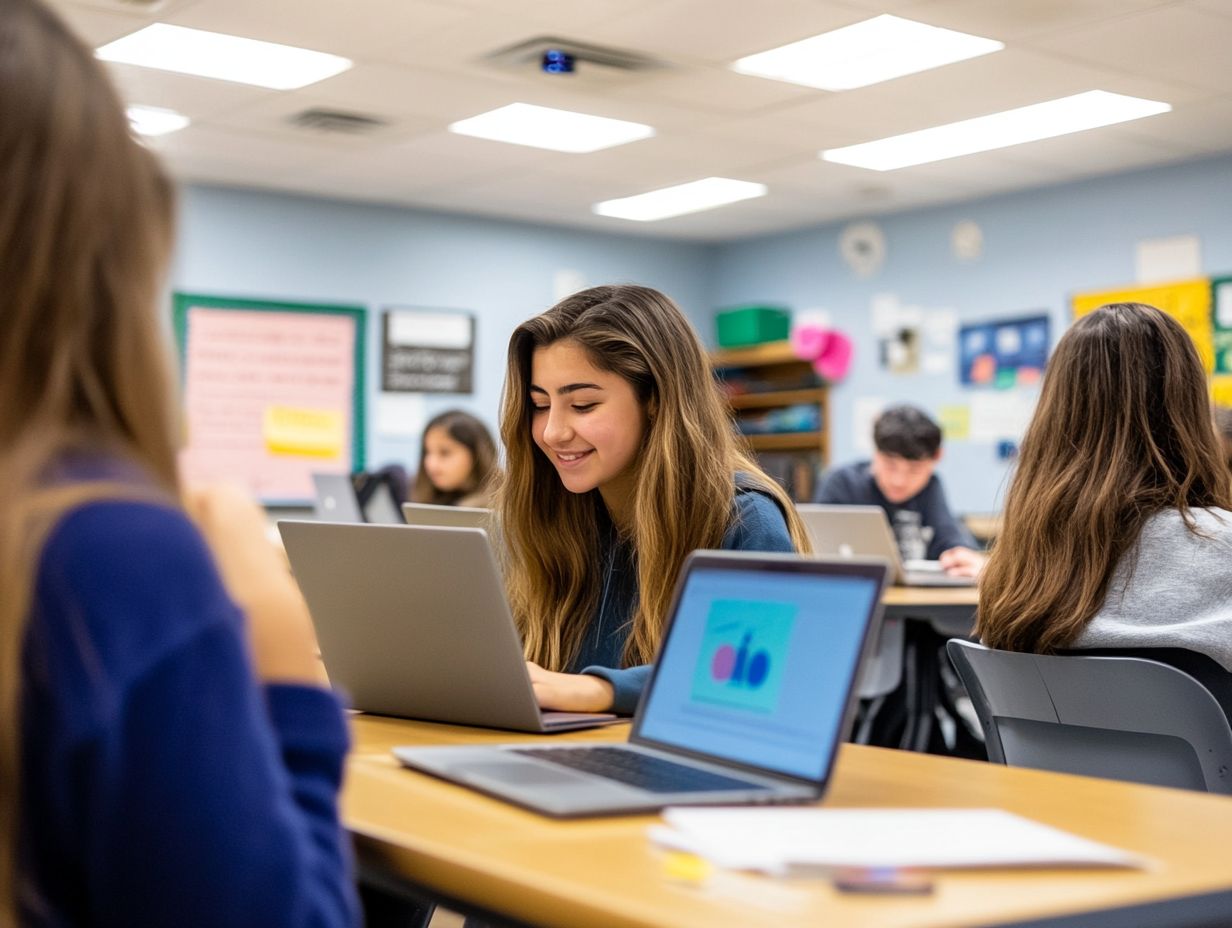
Real-world examples and case studies of blended learning implementations reveal how effectively educational technology tools like computers and online platforms can be integrated with innovative teaching methods across various educational settings.
For instance, a compelling case study from the University of Central Florida showcases the integration of interactive digital platforms. This significantly boosted student engagement and improved academic performance.
By leveraging tools like Canvas and Zoom, educators crafted a seamless learning experience that skillfully blended online resources with in-person activities.
K-12 programs like the Flipped Classroom model have also enjoyed notable success. Here, students learn new concepts at home through video lectures and then dive into hands-on exercises during class time.
These successful implementations promote student independence and serve as a valuable framework for educational institutions aiming to adopt blended learning strategies in the future.
Best Practices for Successful Blended Learning
Unlock the potential of blended learning with these best practices! Embracing best practices for successful blended learning is crucial for you as an educator.
By doing so, you can elevate your instructional effectiveness, foster greater learner engagement, and support continuous growth in your students.
Tips for Designing and Facilitating Effective Blended Learning
Designing and facilitating effective blended learning experiences demands a thoughtful approach that considers your diverse needs as a learner.
It’s essential to integrate the right teaching tools to enhance your journey.
By blending face-to-face interactions with online resources, you can create a flexible environment that accommodates various learning styles.
Instructors must evaluate your specific preferences whether you thrive on visual aids, interactive discussions, or hands-on activities.
Incorporating technology, such as learning management systems online platforms that help teachers organize courses and materials online discussion forums, and multimedia content, not only enriches the curriculum but also encourages collaboration among you and your peers.
Regular feedback and assessments will help adjust strategies to ensure you progress at your own pace, ultimately crafting an engaging and inclusive educational experience tailored just for you.
Frequently Asked Questions
What is blended learning?
Blended learning is an educational approach that combines traditional classroom instruction with online learning activities, allowing for a more flexible and interactive learning experience.
What are the benefits of blended learning for skill enhancement?
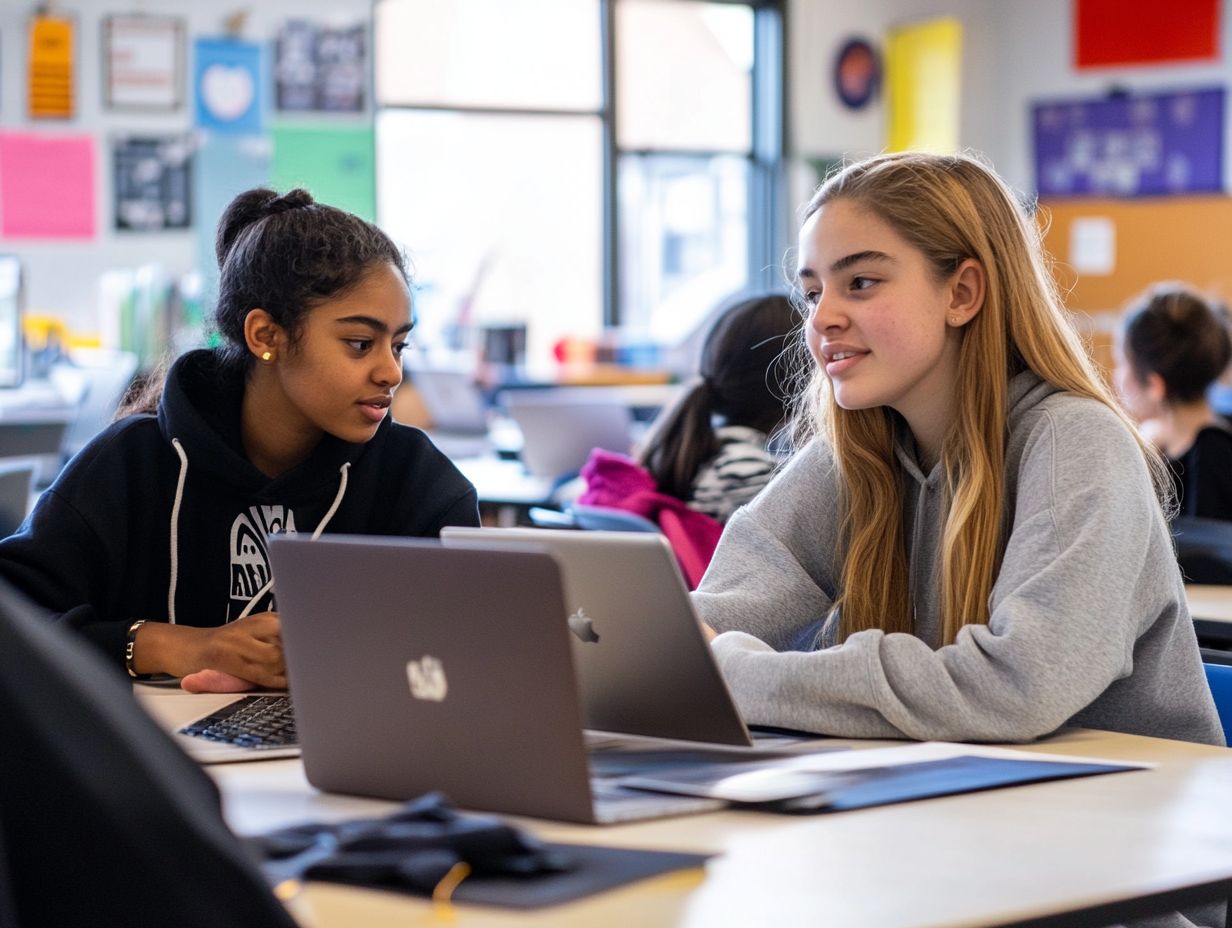
The benefits of blended learning for skill enhancement include increased flexibility, personalized learning, and improved access to a variety of learning resources and materials, including the benefits of gamification in skill enhancement.
How does blended learning improve flexibility?
Blended learning allows learners to access course materials and complete activities at their own pace and on their own time, making it easier to balance work, personal commitments, and learning.
How does blended learning personalize the learning experience?
Blended learning allows for a more personalized experience by incorporating various learning activities and resources that cater to different learning styles and needs.
What types of learning resources are available in blended learning?
Blended learning offers a wide range of learning resources such as videos, interactive quizzes, simulations, and online discussions, making the learning experience more engaging and diverse.
Can blended learning help enhance specific skills?
Yes, blended learning can be tailored to focus on specific skills, allowing learners to improve their proficiency in areas such as communication, critical thinking, and technical skills.

